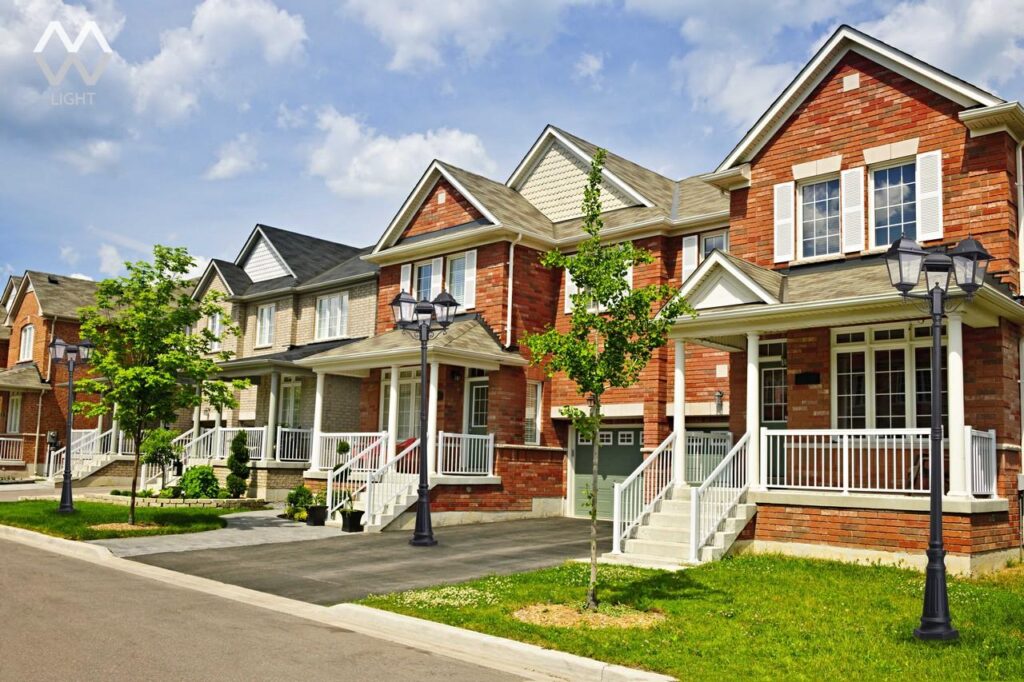The State of the Property Market in the USA: Trends, Challenges, and Future Outlook
The U.S. property market is one of the most dynamic and influential sectors of the economy, with far-reaching effects on personal wealth, investment strategies, and the broader economy. As we move further into 2024, the landscape of property in the USA is shaped by a mixture of high demand, rising interest rates, and a complex set of challenges that both investors and homeowners must navigate. Here’s an overview of current trends, challenges, and what the future may hold for property in the U.S.

Current Trends in the U.S. Property Market
1. Price Growth Stagnation
While real estate prices skyrocketed during the pandemic, driven by historically low mortgage rates and a rush for space, recent data shows signs of stabilization. In many areas, particularly in large metropolitan cities such as New York, Los Angeles, and San Francisco, home prices have plateaued or even dropped slightly. However, in suburban and emerging urban areas, property prices remain resilient due to continued demand for larger living spaces.
The trend of people moving from urban centers to suburban and rural areas, a shift that was accelerated by the COVID-19 pandemic, is still visible in many parts of the country. With more flexibility in work-from-home policies, people are seeking affordable homes with more space, making suburban real estate a hot commodity.
2. Rising Mortgage Rates
One of the most impactful forces in the property market today is the rise in mortgage rates. As the Federal Reserve continues to raise interest rates in an effort to combat inflation, mortgage rates have surged. As of late 2024, the average rate for a 30-year fixed mortgage is hovering around 7% or higher, up from record-low rates in previous years.
Higher interest rates have led to a cooling of the housing market, particularly among first-time buyers. Many potential buyers are now opting to delay their purchases, hoping for a drop in rates or looking for more affordable options. In contrast, those who already own homes may stay in place longer, creating a lack of inventory, especially in desirable neighborhoods.
3. Inventory Shortage
Inventory has remained tight for several years, exacerbating the challenge of finding affordable housing. Many homeowners are reluctant to sell due to the fear of facing higher mortgage rates on their next home purchase. This shortage has created fierce competition among buyers, leading to bidding wars in certain markets and pushing prices higher in some areas.
New construction has been unable to keep up with demand, especially in the entry-level home market, where builders face rising costs for materials and labor shortages. The lack of affordable housing continues to be a significant issue, with many Americans priced out of homeownership altogether.
Challenges Facing the U.S. Property Market
1. Affordable Housing Crisis
The biggest challenge in the U.S. property market remains the affordable housing crisis. As home prices rise and wages stagnate for many, a large portion of the population finds itself unable to buy homes. Renters, too, are facing rising costs, with rental prices in many cities increasing steadily. The gap between what people can afford and what is available is widening, contributing to a growing divide between homeowners and renters.
Government efforts to address this crisis have had limited success. Although there have been initiatives to provide affordable housing and increase the supply of new homes, many programs have struggled to keep pace with demand. Local zoning laws, community opposition to new development, and the high cost of construction remain barriers to solving the issue.
2. Investor Activity and the Role of Corporations
Another trend shaping the property market is the growing role of institutional investors and corporations in the residential market. Large investment firms have increasingly purchased single-family homes and multifamily properties, contributing to price inflation and driving up rent costs. This trend has sparked debates about the role of institutional investors in the housing market and whether it exacerbates the affordability crisis for regular homebuyers.
3. Economic Uncertainty
Despite strong job growth and a relatively stable economy, economic uncertainty continues to influence property markets across the U.S. Fears of a potential recession, inflationary pressures, and geopolitical instability can all affect buyer and investor confidence. As a result, both residential and commercial real estate markets may face fluctuations depending on how the broader economic situation evolves.

Future Outlook for U.S. Property
Looking ahead, the property market in the U.S. is expected to remain challenging, with both opportunities and risks. The combination of rising interest rates, high demand for housing, and low inventory will continue to impact buyers, renters, and investors.
However, the potential for price corrections in overheated markets could provide opportunities for those who can afford to buy in the coming years. For investors, focusing on areas with strong growth potential, such as emerging tech hubs or areas benefiting from population migration, could provide attractive returns.
Additionally, innovative housing solutions, including modular homes, affordable rental developments, and the adaptation of office spaces to residential use, may help address some of the pressing issues related to affordability and inventory shortages.
In conclusion, the U.S. property market is poised for a period of uncertainty, but with the right strategies, investors and homeowners alike can still find opportunities. By staying informed about trends and being prepared to adapt, participants in the market can navigate these turbulent times and secure long-term success.